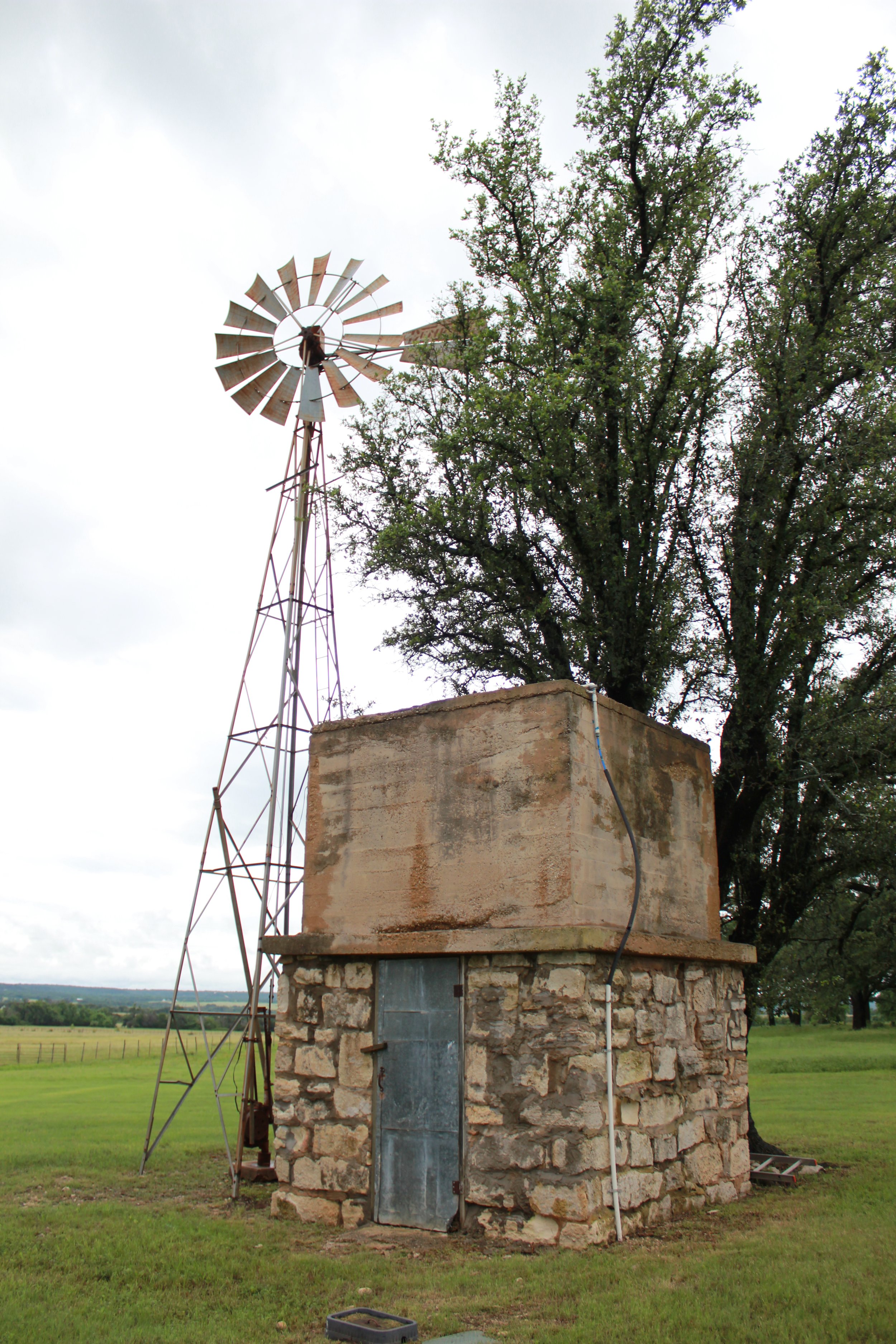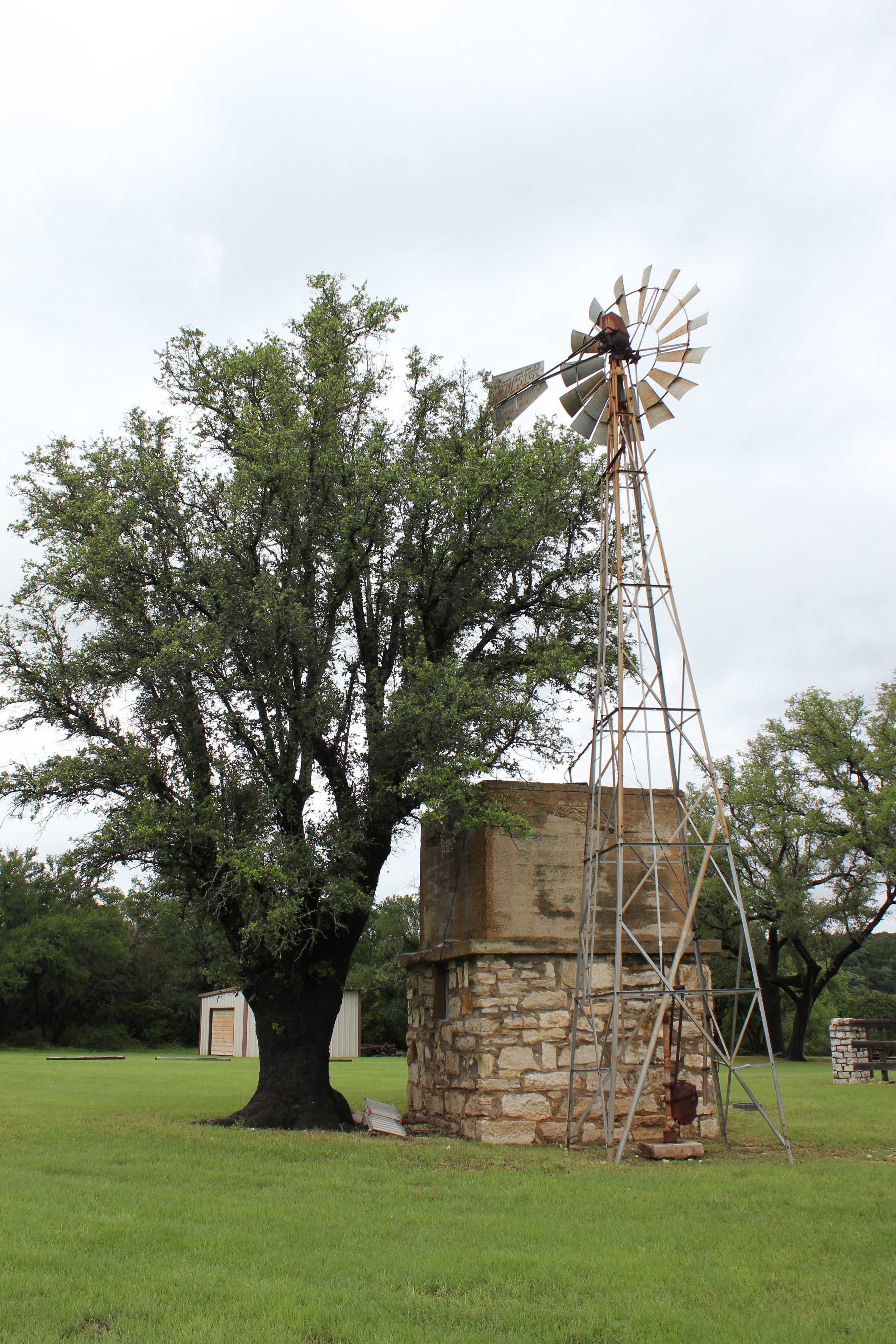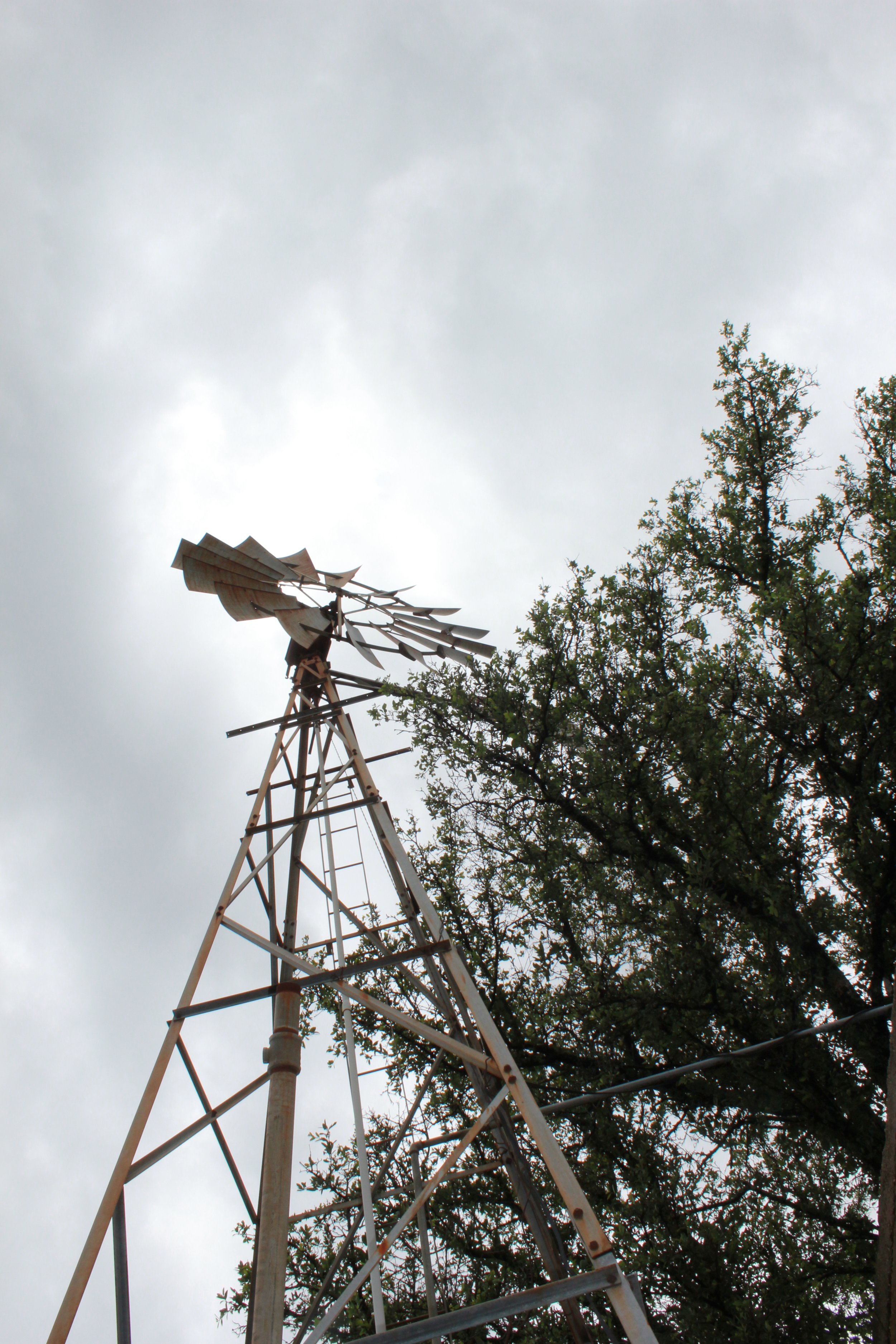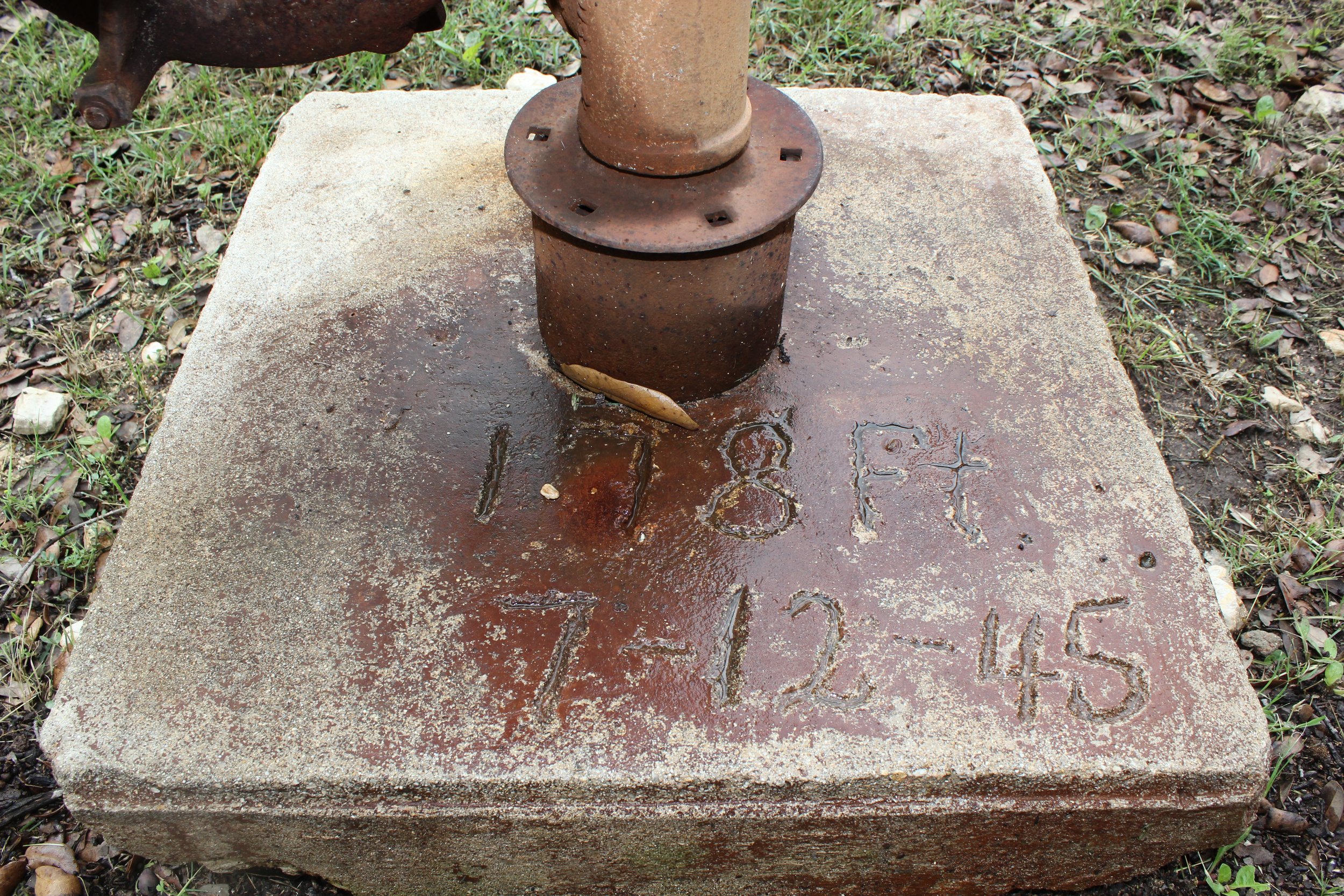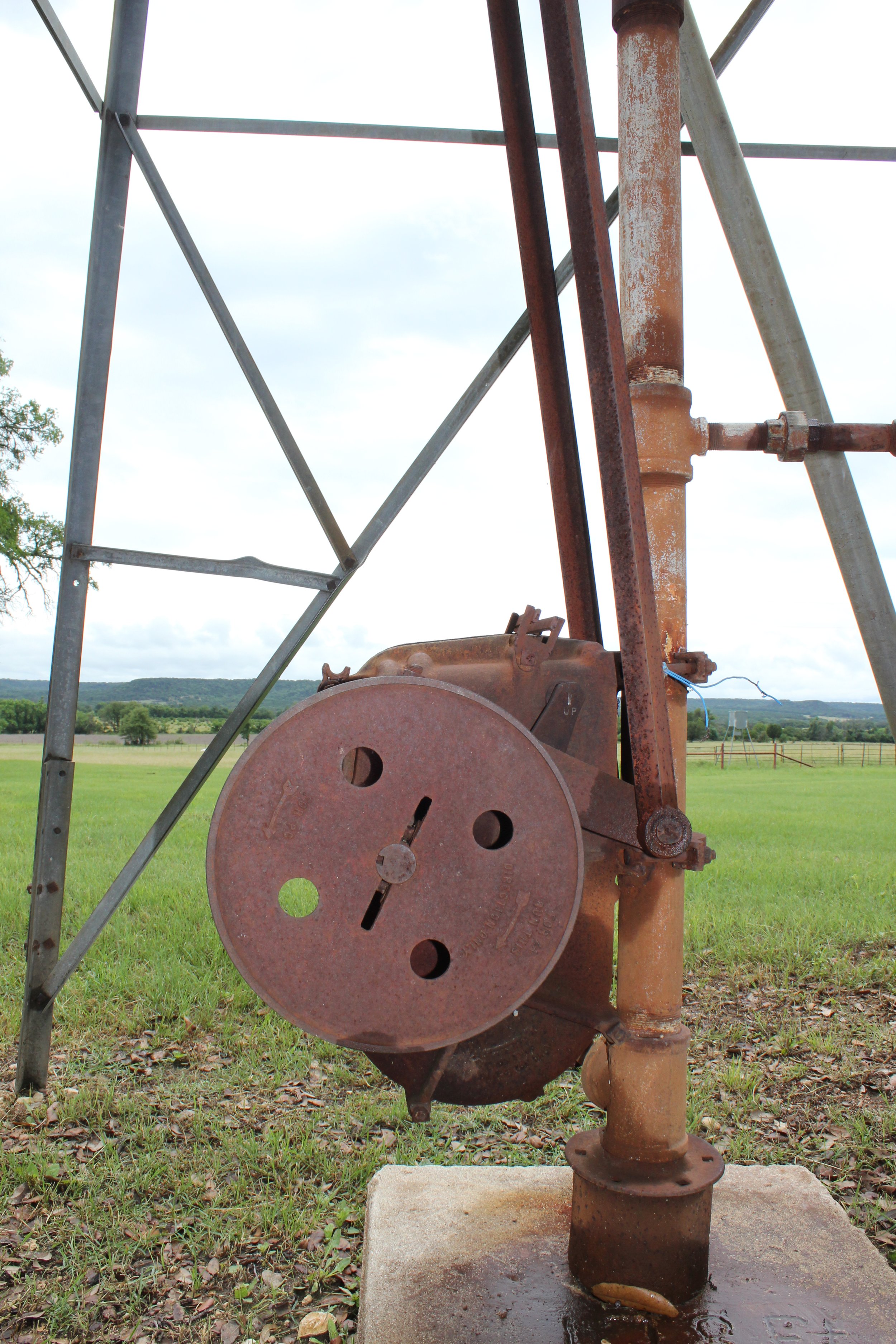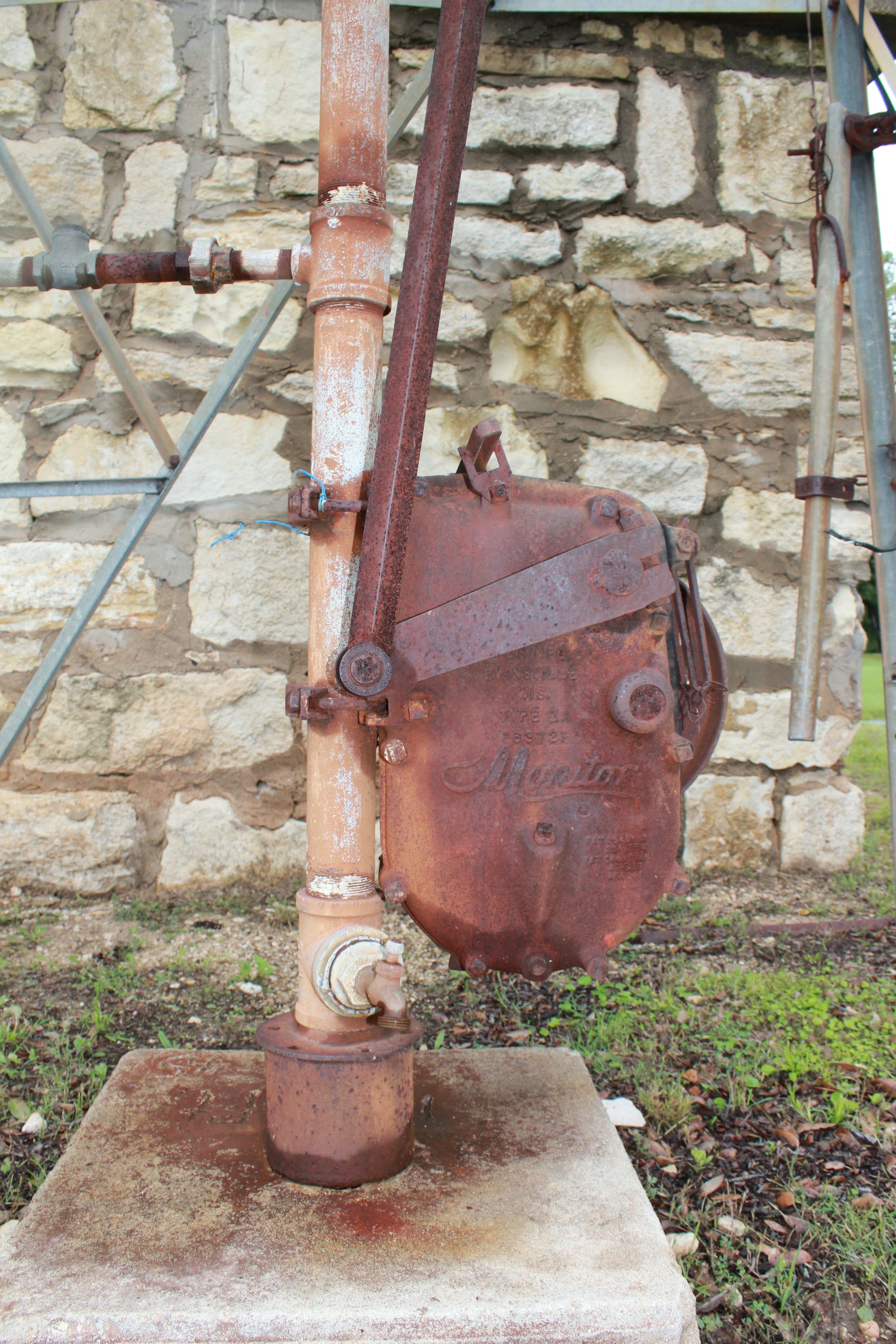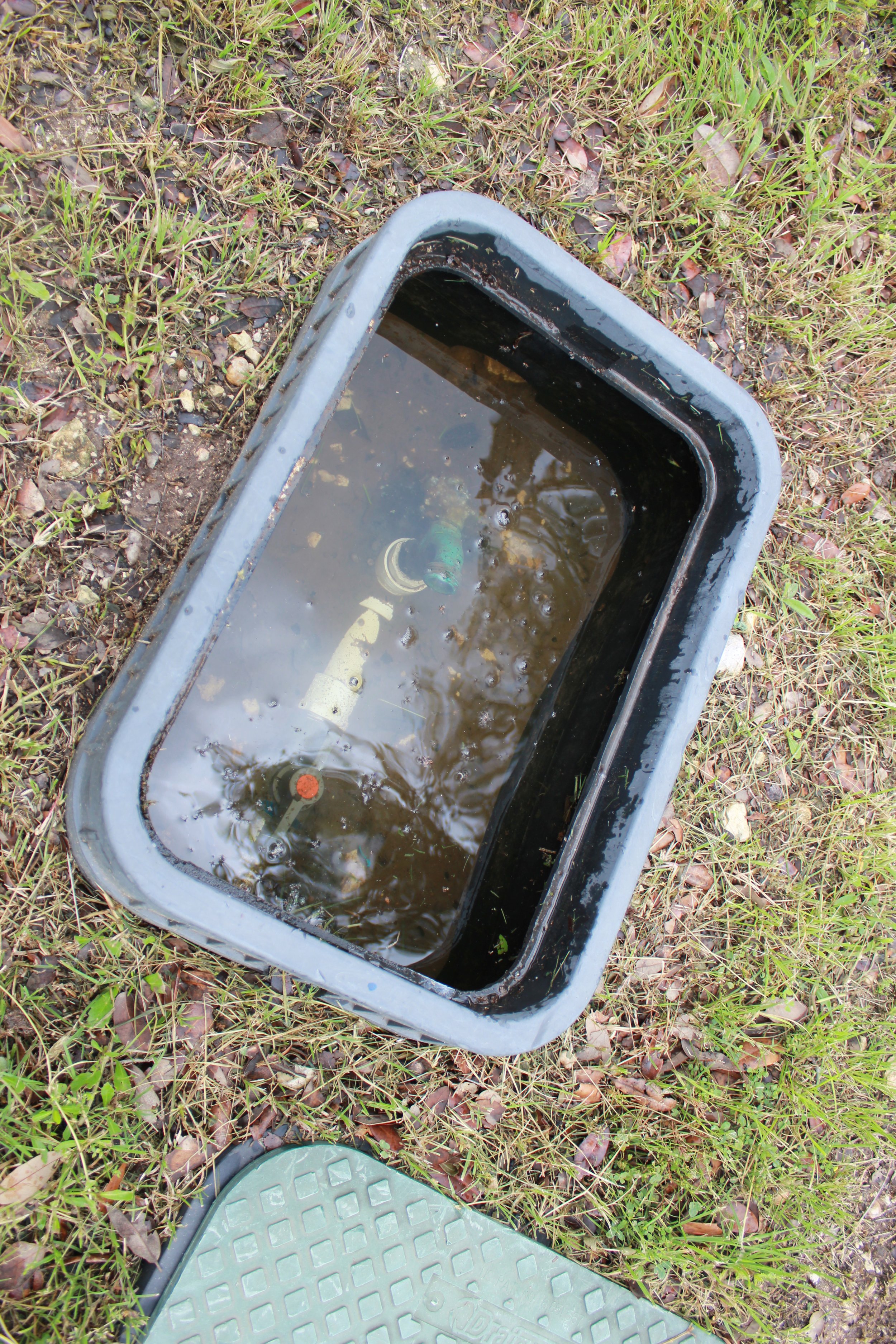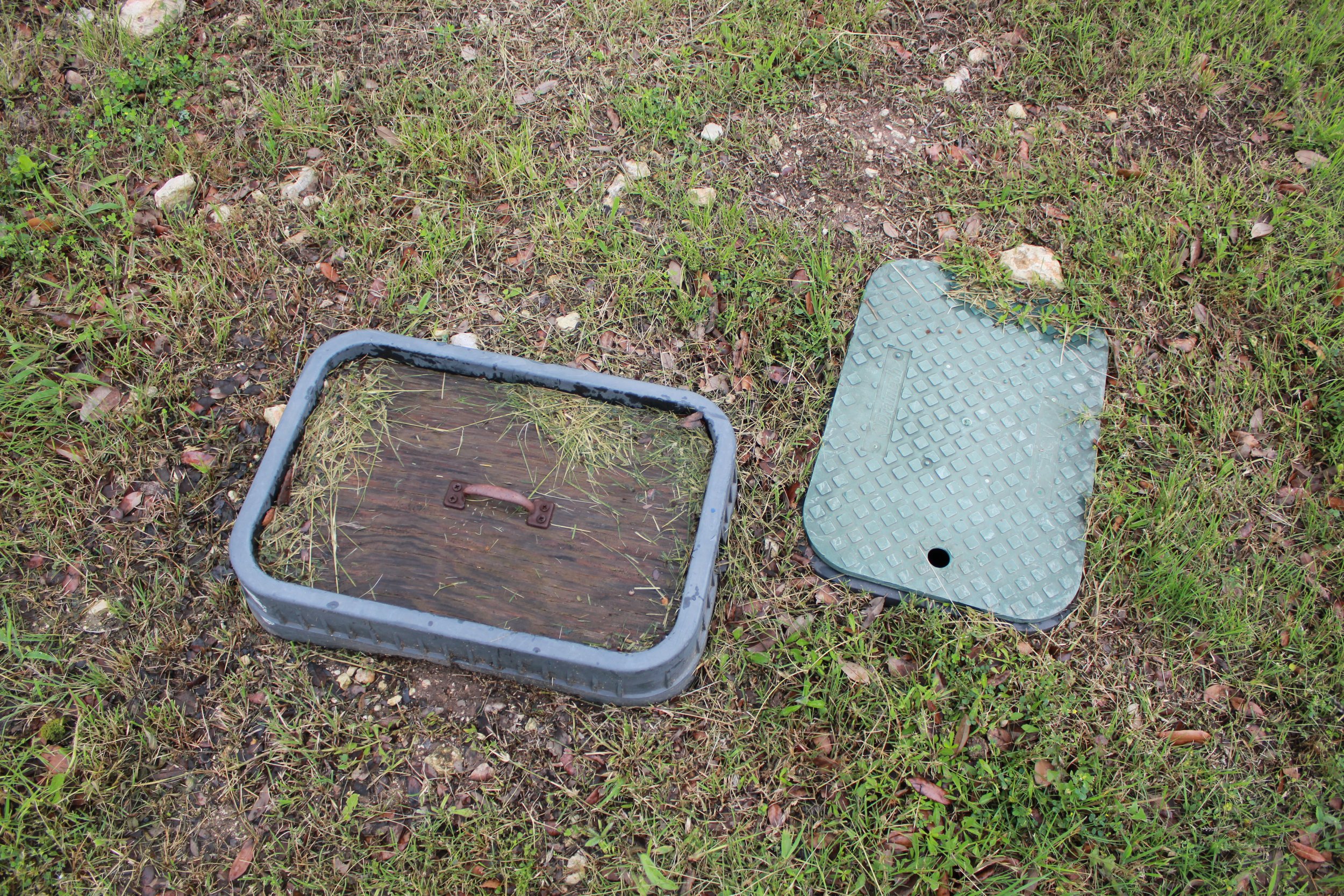If you live in or have driven by the country side, you've probably seen windmills in the middle of fields and pastures. If you fall in the first category, you most likely know what they are and what they do. If not, you might be interested to learn that these windmills serve as a mechanical pump for a water well sitting right below them. Although not ubiquitous, they continue to be used successfully on farms, ranches, and homes across rural America. I've worked on several custom home projects that got their water supply from wells, but alas, none of them used windpumps as a water lifting device; they all used electric pumps. So, when I had the opportunity to investigate an old relic up-close, I was pretty psyched. Does that make me a nerd? I love that they use a renewable resource; not to mention, they are really cool sculptural elements.
Unfortunately, this particular windmill was not operational; the gear box was rusted and stuck in place. The well was dug in 1945 and I presume the windmill dates back to the same year. The well is still functional, and is currently serviced by an electric pump housed inside the masonry structure beside it. There is a concrete storage tank, which would have been necessary when the wind pump was doing the work (a wind-pump works when there is wind, not on-demand, therefore storage is critical). I doubt the tank is still being used. Depending on the well's yield (water production) the electric pump will run for a time to fill the pressure tank, which serves as a small storage tank. Also, the well did not supply the ranch house next to it, it was only serving livestock; so the watering trough (for horses/cattle, see picture) was an end-use storage tank.
Although the technology dates back centuries, the golden age of windpumps occurred in the late 1800s, with the development and production of the American farm windpump. Millions of modernized self-regulating wind-pumps, made of industrialized materials (steel) and multiple blades, played a large role in the cultivation of the American landscape. But after electricity became readily available in the 1930's, this low-tech staple became the step child to electric pumps. Only a handful of companies have sustained their craft; Aermotor Windmill Company, a predominant player since 1888, is one of the few that still keeps its doors open, right here in Texas (San Angelo).
It's unfortunate that electric pumps are often the default technology used for extracting well water. This article by the Windmill Technology Center makes a compelling case for pumping water with wind energy. It also provides detailed information on sizing a windmill pump for domestic (and farm/ ranch) water needs.
Definitely something worth researching and specifying for my next project that needs a well for water supply. For more information on how a wind pump works, read this.
Cheers,
Sharon.

